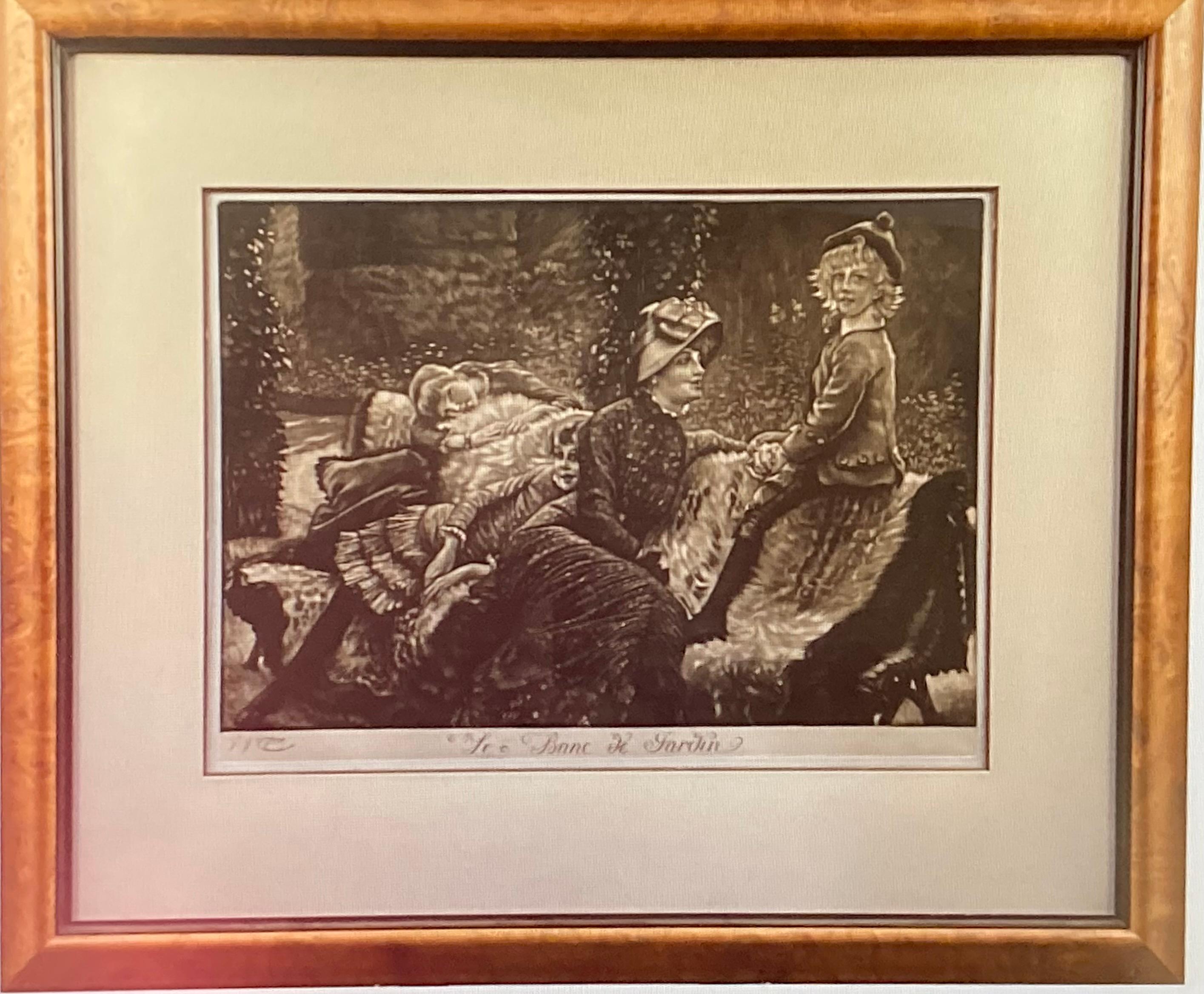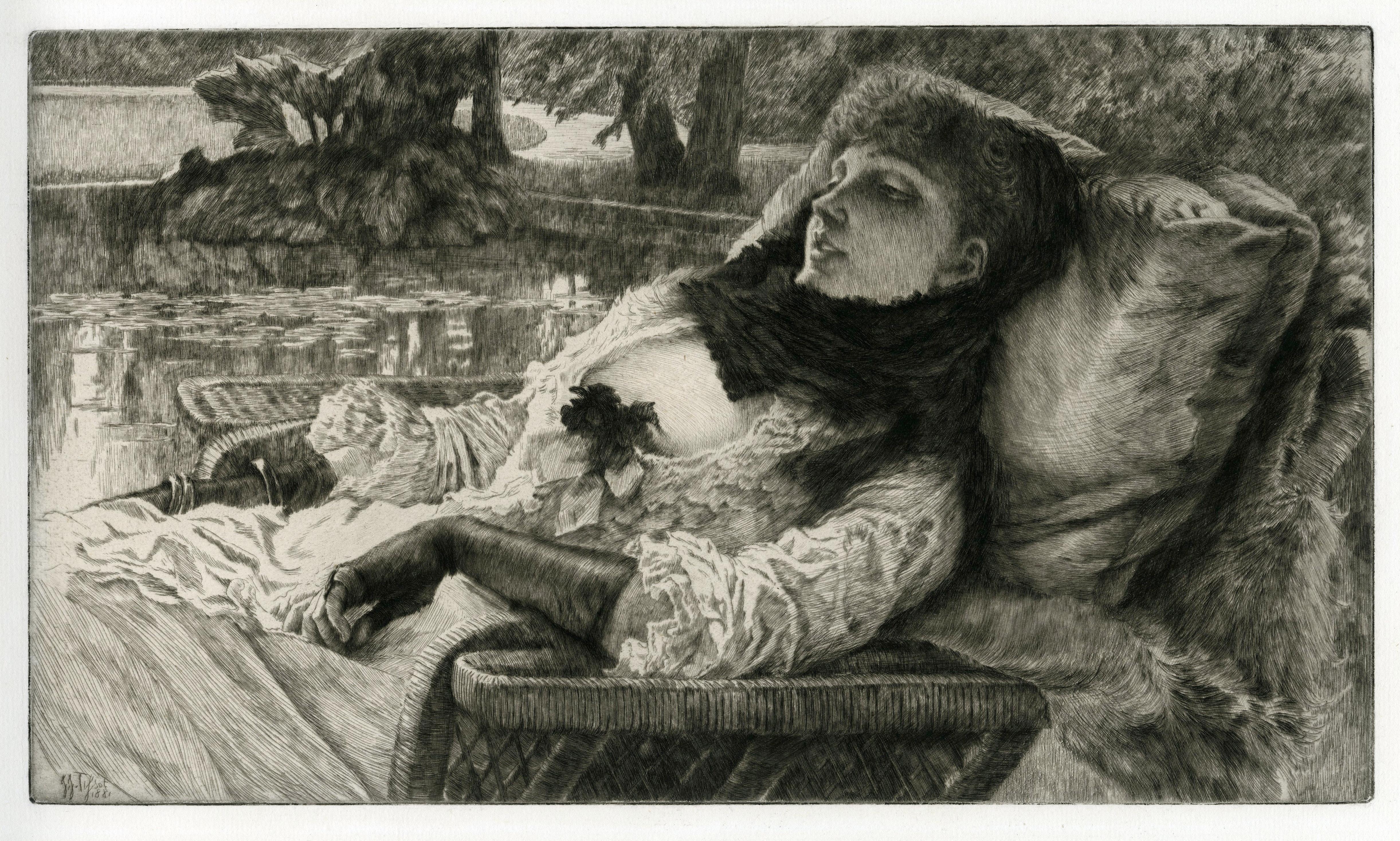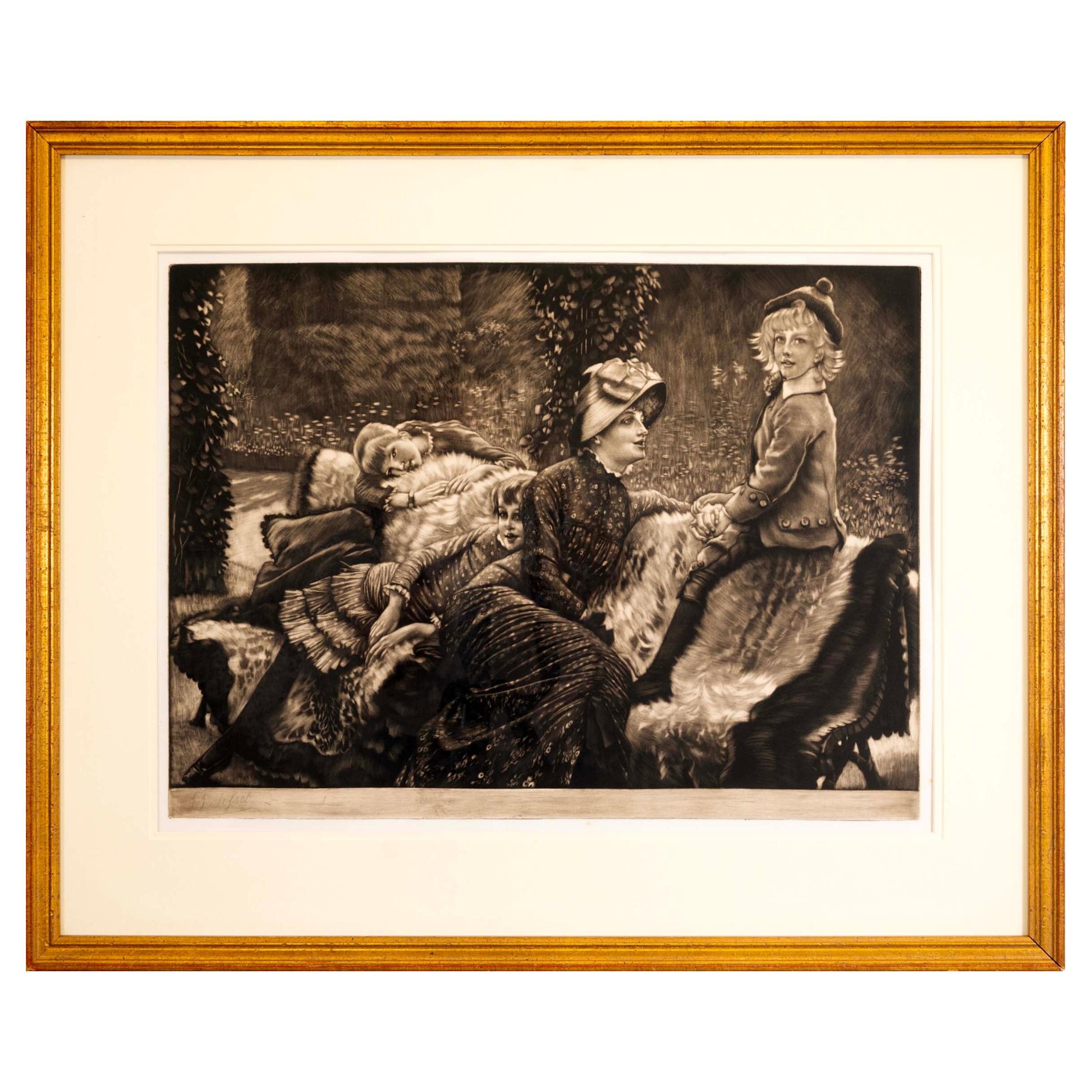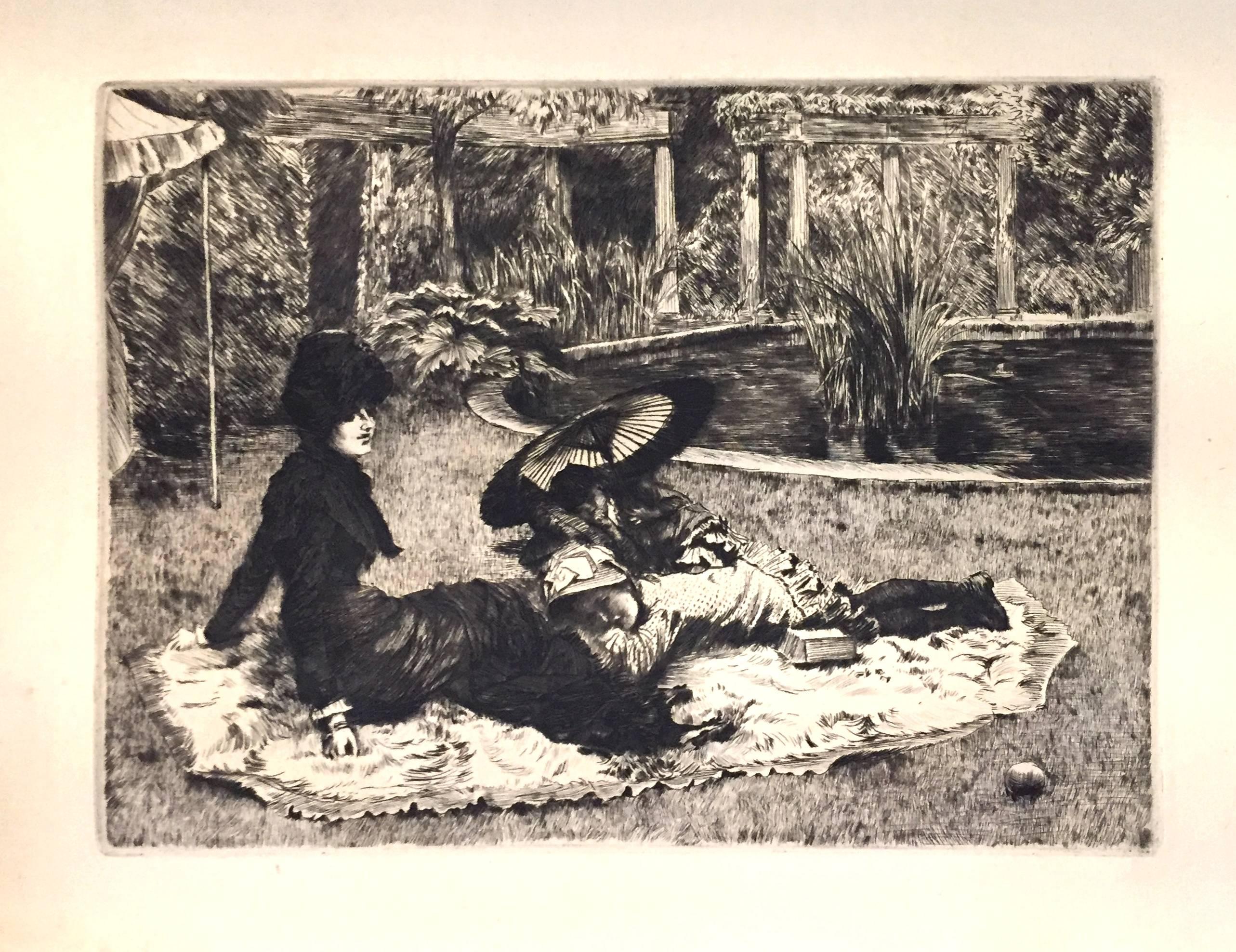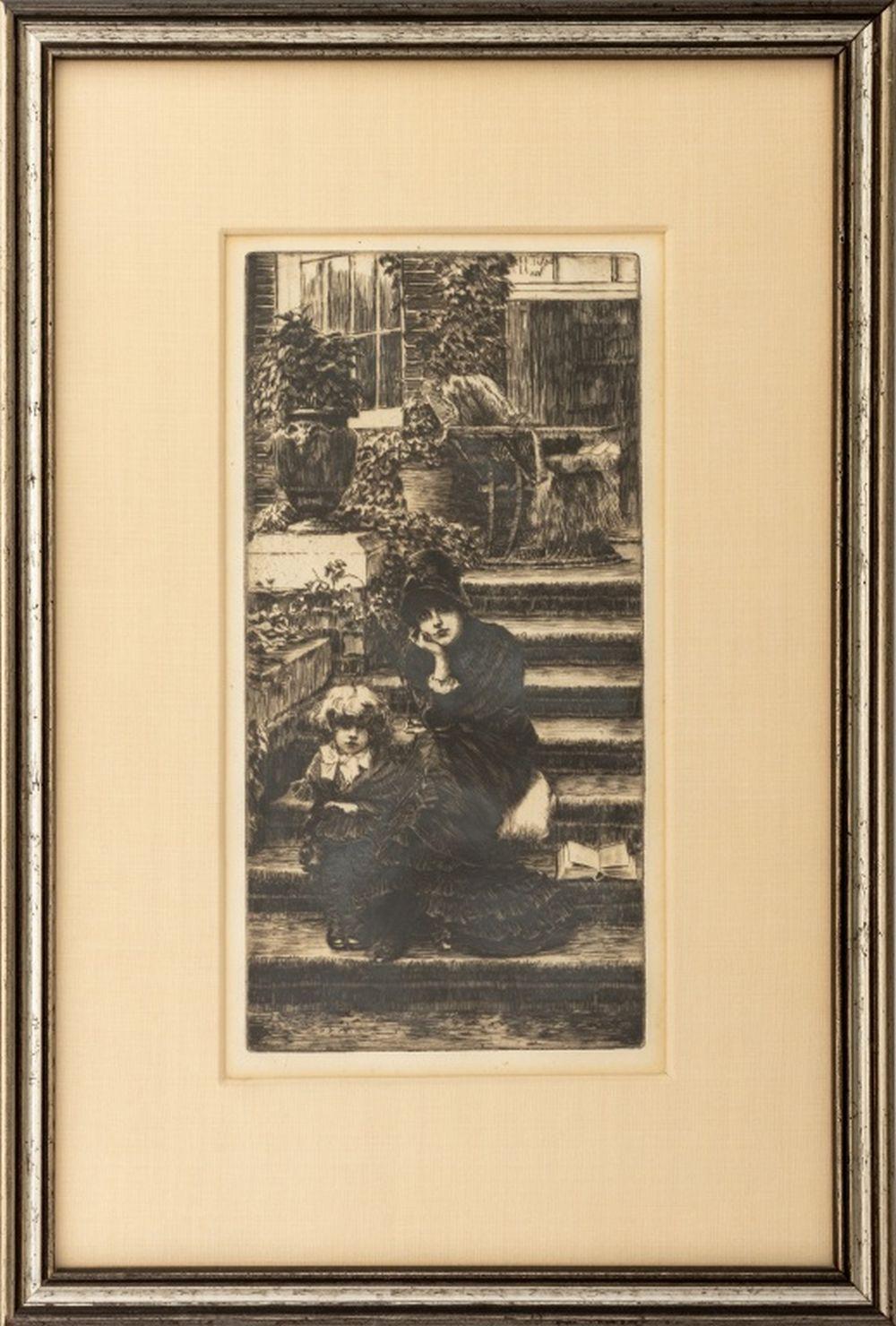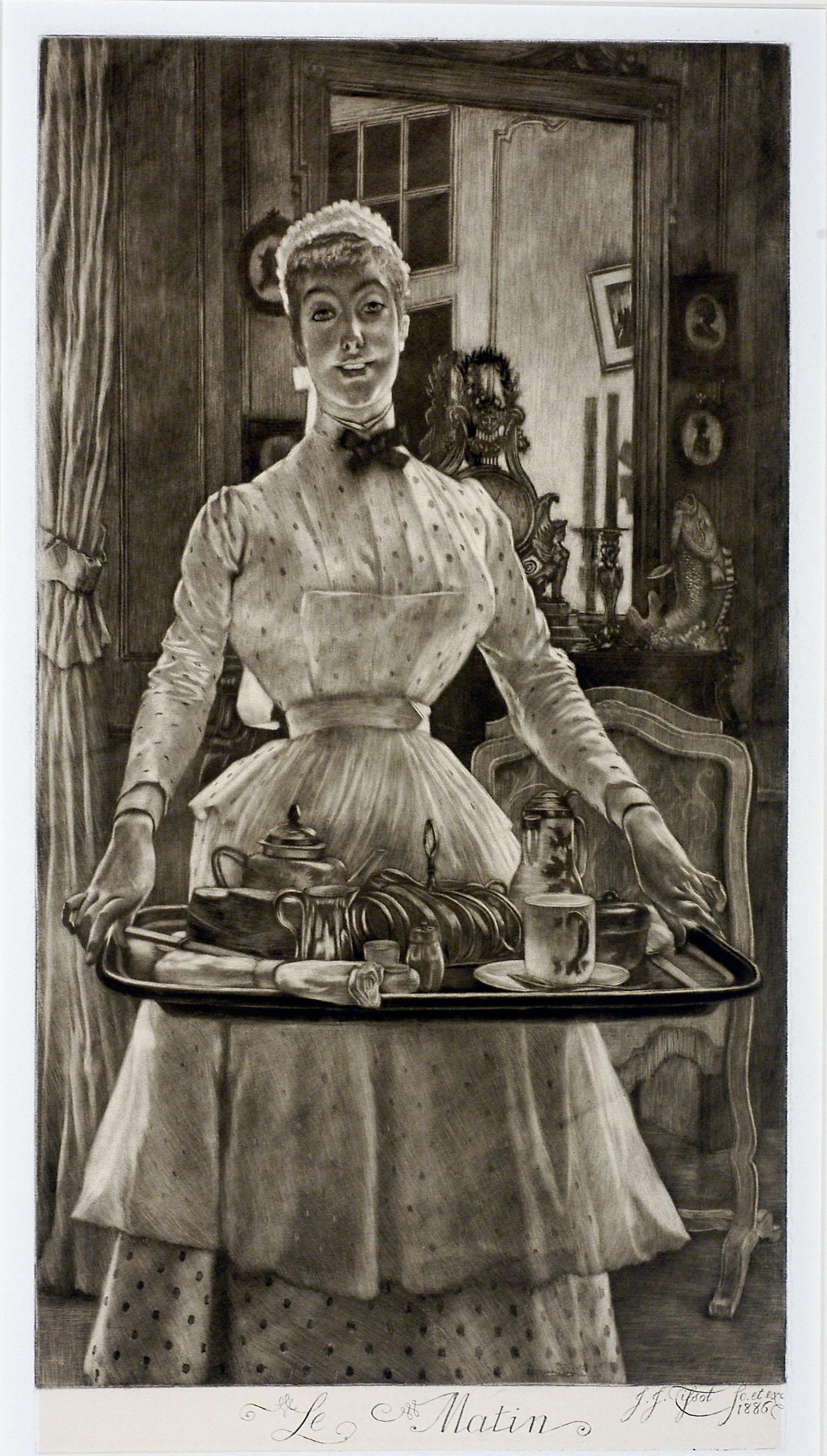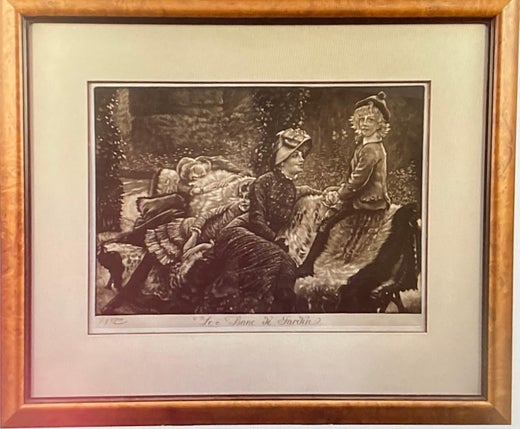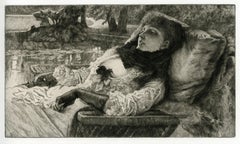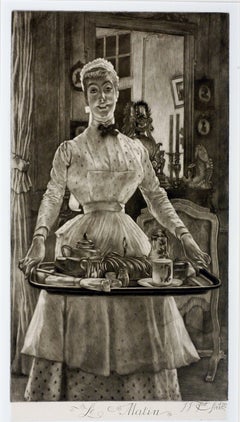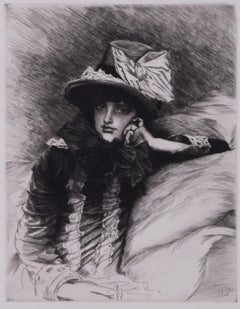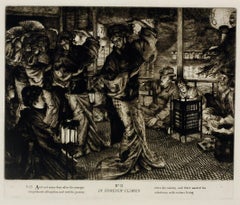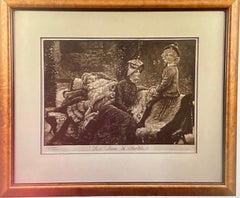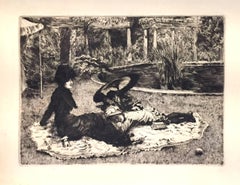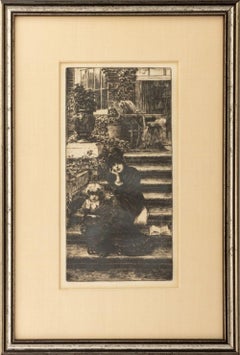Items Similar to Le banc de jardin (The Garden Bench)
Want more images or videos?
Request additional images or videos from the seller
1 of 10
James Jacques Joseph TissotLe banc de jardin (The Garden Bench)1883
1883
$4,000
£3,060.75
€3,503.06
CA$5,649.05
A$6,139.55
CHF 3,290.24
MX$74,545.06
NOK 41,306.95
SEK 38,305.92
DKK 26,163.51
About the Item
Le banc de jardin (The Garden Bench)
Mezzotint and engraving on cream chine collé laid down on ivory wove paper, 1883
Signed in the plate (see photo)
Condition: Brilliant impression
a few minor spots of foxing in the bottom margin
1/4 inch on the left and right margin folded back for framing.
very minor sun staining 1 1/2 inches outside of the plate mark
Image/Plate size: 16 1/2 x 22 1/8 inches
References: Beraldi 66
Wentworth 75 i/III, before the title is
engraved
Wentowrth states the edition in all three states is at least 500. The first state as here seems to be rare.
This is the mezzotint version of a painting of the same title. The models for the composition were Kathleen Newton, her daughter Violet, her niece Belle, and her son Cecil, seated on a bench in Tissot’s garden in St. John's Wood, London. The stylization of the figures, both in pose and in grouping is a highlight of Tissot's later style.
Le Banc Jardin is one of a small group of mezzotint studies that Tissot made in England between 1883 and 1885. It is characteristic of his facility as a printmaker that his first plate in an extremely difficult medium should be so brilliantly conceived and executed. The quality of inner glowing light and the richness in the combination of blacks and the pattern highlights are striking. The contrast of textures -- the fur rug, the silk of the dresses, and the foliage beyond -- are a tour-de-force of printmaking.
Courtesy Allinson
A similar impression of this state is in the collection of The Clark Art Institute and illustrated on their web site.
- Creator:James Jacques Joseph Tissot (1836-1902, French)
- Creation Year:1883
- Dimensions:Height: 15.5 in (39.37 cm)Width: 22.13 in (56.22 cm)
- Medium:
- Movement & Style:
- Period:
- Condition:
- Gallery Location:Fairlawn, OH
- Reference Number:Seller: FA122511stDibs: LU14014457182
James Jacques Joseph Tissot
Jacques Joseph Tissot (French: [tiso]; 15 October 1836 – 8 August 1902), Anglicized as James Tissot (), was a French painter and illustrator. He was a successful painter of Paris society before moving to London in 1871. He became famous as a genre painter of fashionably dressed women shown in various scenes of everyday life. He also painted scenes and figures from the Bible.
About the Seller
5.0
Recognized Seller
These prestigious sellers are industry leaders and represent the highest echelon for item quality and design.
Gold Seller
Premium sellers maintaining a 4.3+ rating and 24-hour response times
Established in 1978
1stDibs seller since 2013
833 sales on 1stDibs
Typical response time: <1 hour
Associations
International Fine Print Dealers Association
- ShippingRetrieving quote...Shipping from: Akron, OH
- Return Policy
More From This Seller
View AllSoirée d'été (Summer Evening)
By James Jacques Joseph Tissot
Located in Fairlawn, OH
Soirée d'été (Summer Evening)
Etching & drypoint, 1881
Signed and dated in the plate lower left corner
Edition: c. 100 in both states; plate canceled
Tissot's lover, Irish divorcee ...
Category
1880s Impressionist Portrait Prints
Materials
Etching
Le Matin (Morning)
By James Jacques Joseph Tissot
Located in Fairlawn, OH
Le Matin (Morning)
Mezzotint, 1886
Signed and dated in the plate (see photos)
Edition: at least 650 impressions in both states
Reference: Wentworth 82 ii/II
Provenance: Heirs of Edmu...
Category
1880s French School Interior Prints
Materials
Mezzotint
Berthe
By James Jacques Joseph Tissot
Located in Fairlawn, OH
Berthe
Etching with drypoint, 1883
Signed in the plate (see photo)
This etching was inspired by an 1882/3 pastel which the artist included in his ambitious "Femme a Paris" exhibition at Galerie Sedelmeyer, Paris, in 1885.
Reference: Beraldi 65
Wentworth 74, published state
Tissot 76
Condition: Excellent
Plate/Image size: 14 1/4 x 11 inches
Sheet size: 19 1/2 x 15 inches
Frame size: 23-1/2 x 20-1/4 inches
Donald Morris Gallery, Birmingham, Michigan (Morris had a distinguished collection of Tissot prints...
Category
1880s Impressionist Portrait Prints
Materials
Etching
L'enfant prodigue: en pays etranger (The Prodigal Son: In Foreign Climes)
By James Jacques Joseph Tissot
Located in Fairlawn, OH
L'enfant prodigue: en pays etranger (The Prodigal Son: In Foreign Climes)
Etching, 1881
Unsigned (as usual for this state)
From: L'enfant prodigue, (The Prodigal Son, five plates)
Ed...
Category
1880s Impressionist Figurative Prints
Materials
Etching
L'enfant prodigue: en pays etranger (The Prodigal Son: In Foreign Climes)
By James Jacques Joseph Tissot
Located in Fairlawn, OH
L'enfant prodigue: en pays etranger (The Prodigal Son: In Foreign Climes)
Etching, 1881
Unsigned (as usual for this state)
From: L'enfant prodigue, (The Prodigal Son, five plates)
Ed...
Category
1880s Impressionist Figurative Prints
Materials
Etching
Au bord de la mer (At the Sea Side)
By James Jacques Joseph Tissot
Located in Fairlawn, OH
Au bord de la mer (At the Sea Side)
Etching and drypoint, 1880
Signed in the plate middle left edge (see photo)
Edition: c. 100
A very rich impression, full of burr and contrasts
Pri...
Category
1880s Impressionist Figurative Prints
Materials
Etching
You May Also Like
Le banc de jardin (The Garden Bench).
By James Jacques Joseph Tissot
Located in Storrs, CT
Le banc de jardin (The Garden Bench). 1883. Mezzotint. Tissot catalog 79, Béraldi catalog 66, Wentworth catalog 75 state ii/iii. 16 1/2 x 22 1/8 (s...
Category
19th Century Impressionist Portrait Prints
Materials
Mezzotint
$1,800 Sale Price
71% Off
James Tissot Le Banc de Jardin Mezzotint Etching on Paper Beraldi 66 Edition
By James Tissot
Located in Keego Harbor, MI
A realism style mezzotint etching on paper titled “Le Banc de Jardin (The Garden Bench)” by French artist James Tissot. Signed in the plate. From the Beraldi 66 edition, 1st state. P...
Category
20th Century French Prints
Materials
Paper
On the Grass - Etching and Drypoint by J. Tissot - 1880
By James Tissot
Located in Roma, IT
Very fine print on verge crème.
Some small traces of oxidation, dust and some flowerings on external edges of sheet, otherwise excellent conditions.
Full margins.
Ref. Wentworth 50.
Category
1880s Post-Impressionist Landscape Prints
Materials
Drypoint, Etching
"Reverie"
By James Jacques Joseph Tissot
Located in Astoria, NY
James Jacques Joseph Tissot (French, 1839-1906), "Reverie", Etching and Drypoint on Laid Paper, 1889, silvered wood frame. Image: 9" H x 4.5" W; frame: 14.75" H x 10" W. Provenance: ...
Category
1880s Figurative Prints
Materials
Laid Paper, Drypoint, Etching
Le Portique de la Galerie Nationale a Londres by J.J. Tissot
By James Jacques Joseph Tissot
Located in Hinsdale, IL
J.J. Tissot
Le Portique de la Galerie Nationale a Londres
(The Portico of the National Gallery, London)
Wentworth 40
Etching and Drypoint on imitation Japanese paper, C. 1878
Only st...
Category
1890s Realist Prints and Multiples
Materials
Drypoint, Etching
$4,400 Sale Price
20% Off
Girl and Child - Etching by James Tissot - Late 19th Century
By James Tissot
Located in Roma, IT
Girl and Child is an original Modern artwork realized by James Tissot, in full James-Joseph-Jacques Tissot, (born Oct. 15, 1836, Nantes, France—died Aug. 8, 1902, Buillon Abbey, near...
Category
Late 19th Century Modern Portrait Prints
Materials
Paper, Etching
More Ways To Browse
Antique Garden Bench
Antique Black Bench
Wolfgang Hutter
Woman In The Waves
Wynn Chamberlain
12 Tribes Of Israel
1930s Wpa Prints
1960s Womens Fashion
Alaska Watercolor
Albrecht Durer Woodcut Print
Alex Katz Dancer 2
Alice Neel Lithograph
Anders Zorn Etchings
Andy Warhol Dollar Sign
Andy Warhol Electric Chair Art
Antique Lawyer Prints
Arnold Friberg
Atoms For Peace
